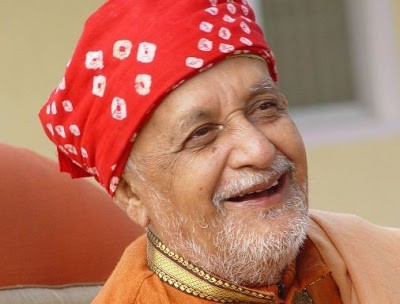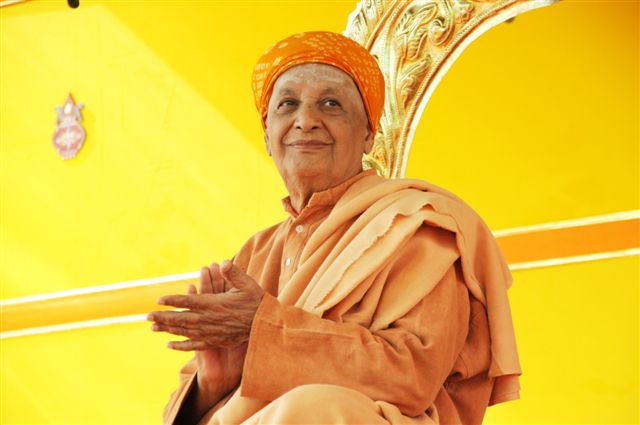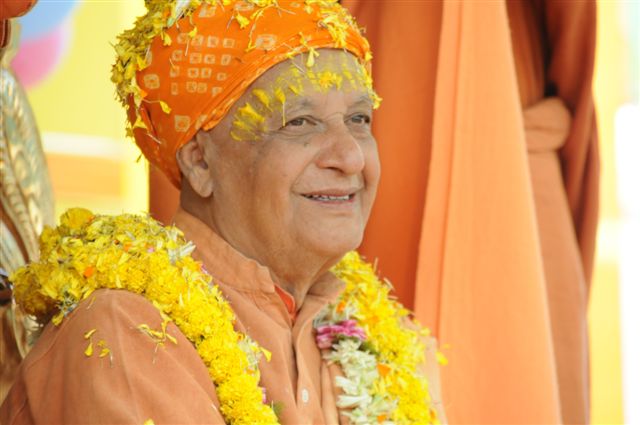Satsang by Swami Satyananda
Pratyahara is conscious introversion, withdrawal of the mind and senses. Patanjali, the author of yogic philosophy, calls pratyahara ‘retreat’ or ‘return’. This important part of human life must be understood by everyone. At night during sleep the consciousness is withdrawn, disassociated from external objects, and we are not aware of our parents, friends, environment, pain and pleasure, profit and loss, not even of ourselves. This withdrawal of consciousness which nature has so benevolently provided saves us from mental crisis. It is nature’s greatest gift to mankind; without it the human race would be mad.
Sleep is not a physiological state; it is a state of mind. According to Patanjali’s Yoga Sutras sleep is one of the chitta vrittis, the fivefold modifications of mind. In pratyahara as in sleep the objective awareness is withdrawn, but we still remain wide awake. Pratyahara is a yogic state of consciousness; sleep is a state without consciousness.
Pratyahara would be the easiest of all human activities if it were not for the one difficulty of maintaining awareness. Withdrawing the mind from external experiences and perceptions is not a difficult task, but once it is withdrawn how will we stay awake? This is where yogic practices come in. They provide a focal point for the mind which keeps us from falling asleep. This is why they are so necessary.
Antar mouna is an important technique for everyone with a disturbed mind, unbalanced emotions and confused samskaras (mental impressions). For all those who are unable to concentrate their mind on one point, the practice of antar mouna will provide a field, a basis for the process of self-cleaning. When the mind is purified, concentration arises spontaneously.
The practice of antar mouna can be done in any yogic posture like padmasana, siddhasana, vajrasana, sukhasana or, if these are not possible, in shavasana – the lying-down posture. It can also be practiced while relaxing in an easy chair. The most important thing to remember is not to fight with yourself. Antar mouna is an excellent remedy for schizophrenia. Most of us are schizophrenic to some degree, because when we have an undesirable thought we fight with it and this creates conflict. Whenever we are thinking something which we don’t like or don’t want to think about, one portion of the mind is in total conflict with another. When this conflict becomes intense, it is called schizophrenia, and when you are unable to accept or cope with it you go to the mental hospital.
In antar mouna be very careful not to concentrate the mind. This is a practice of seeing the mind, observing perceptions and accepting experiences. Even if someone comes or an aeroplane flying overhead disturbs you, observe and accept it. Be a silent, impartial witness to all the functions of the mind. Observe the part of the mind which thinks and the part which rejects that thought.
To have a healthy personality we must respect our mind; whether our thoughts are holy or vicious, we must accept them. In the practice of antar mouna we are aware of the thoughts and visions before us, the sounds raging around us, feelings, a touch on our body, a shock we experience, the chair we sit on, people around us, the train or car passing by. We are aware, not trying to escape from the fact that we are aware. This is the first step in pratyahara for the person who wants to proceed successfully without any ‘spiritual accidents’.
Millions of samskaras, latent impressions buried in the depths of the mind, are always coming up and influencing our behaviour, personality and destiny. The practice of pranayama before antar mouna, explodes these samskaras from the bottom of the mind to the top, and makes us sensitive enough to see exactly what is there. Usually if a thought comes when we are trying to concentrate, we say ‘No’ and immediately set it aside. But this is not good for our personality or spiritual evolution. It is something like having diarrhoea or a bad stomach and trying to control it. We may take some strong medicine which will stop the purging, but then boils may erupt or perhaps the tonsils will be affected. Just as a bad stomach poisons the body, so a bad mind (which everyone has) poisons the psyche. This psychic toxin can influence us to commit suicide or become a criminal, it may cause us to worry day and night or bring on a host of diseases, physiological as well as psychological. Therefore any thought that comes to mind should be accepted.
Close your eyes and be aware of what you are thinking. The past, figures and faces of your friends, people you hate and love, let them come. But remember – you don’t belong to them nor they to you. You are a witness and they are passing objects. When someone you love suddenly comes before your mind and you go on developing the fantasy, this means that you are attached to that thought. Attachment to a thought produces more thoughts and creates further impressions which your consciousness records within. These impressions do not die; they come up again. Antar mouna, this impartial observation of one’s thought patterns, provides a means of eliminating them.
If during the practice your mind goes blank and no thoughts or visions come before you, just do a little more pranayama and again the explosions will come. During antar mouna it is good to have many thoughts and problems, especially bad ones, passing through the mind. By observing and accepting them, they become weak and then you will be able to put them out. This process of purification will help you to pray, chant, contemplate on God or meditate more effectively. Antar mouna can safely take you wherever any other practices can.
In spite of all our efforts to progress on the spiritual path, we are unable to reach the higher stages of awareness because of the horrible faces, frightening symbols and dark corners within us. A person with cancer or a tumour will not regain health simply by eating fruits and other vitamin-rich foods. Similarly, no matter how much we pray and contemplate, no matter how enthusiastic we are, enlightenment will never dawn as long as these ugly faces are within us. Our overloaded consciousness must be cleaned out first, and this is a very difficult task. It may take many months or even years to complete.
We are taught not to think particular thoughts by our parents, society and the scriptures. Gradually all these ‘forbidden’ thoughts are buried so deep that our mind can no longer bring them up. But sometimes perhaps due to the death of a close relative or friend, the loss of a prosperous business, a betrayal etc. an explosion takes place and these ugly faces come up. When decades of suppression have made them very powerful, we are unable to stand up to them. These old impressions explode like a bomb and often take people to the mental hospital.
To avoid this we must boldly start to bring these dirty faces up and out of our consciousness. We can witness these powerful thought forms without fear by remembering to observe without identifying with them. I know of aspirants who imagined themselves killing thousands of people during their antar mouna practices, but today they are wonderful souls.
The samskaras hidden within us act as powerful barriers to spiritual enlightenment as well as day to day happiness. If you know of a way around them then follow it. But I know of no other way except to bring them up and eliminate them. They smell and feel bad, I know. They are unpleasant thoughts of crime, violence, powerful passions, horrible depressions, terrible fears. When by chance they come out in an unexpected explosion, the mind may be unbalanced. Therefore you have to start bringing them out little by little, item by item, so that in the course of time you will be purified. In yoga this stage is called atma shuddhi (self-purification) or chitta shuddhi (mental purification). All spiritually minded people must understand that until this stage is reached, the super conscious entity, God or whatever you wish to call him, will not be clear to you. You can say your prayers for fifteen hundred years, you can roll your beads, I am not discouraging you – continue. But troublesome samskaras, the greatest barrier between ‘me’ and ‘that’, will still be there. Antar mouna is the only way over it.
The twentieth century is a time of suppression. Man is not free. He digs holes for himself and moves around within their circumference, unaware of anything beyond them. He has created certain definitions, beliefs and etiquettes which bind and cause him suffering. Yoga can show people of this century the way to self-purification. For all those who wish to devote their life to God, attain samadhi through yoga and meditation, expand their consciousness, I have only one message – get the boulders out of the road first, and then you can proceed safely on your journey. How can the incapable, finite mind, bound by shackles, experience super-consciousness? Just as a dirty mirror cannot reflect our image, so the dirty mind cannot reflect pure consciousness no matter how long you chant, sing or meditate. Therefore, spiritually minded people as well as those who are sick must work on self-purification, antar mouna, as a means to pratyahara. When this is achieved, the door to meditation and spiritual awareness as well as health and happiness will open by itself.




